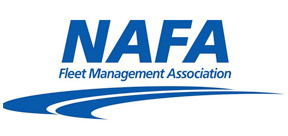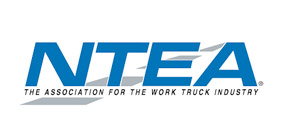Staying on top of the weather with ‘eyes’ on the road

Forecasts are seldom infallible with unexpected atmospheric shifts changing expectations and plans. One must also factor in microclimates, which can see some areas more affected by winter storms than others. However, imagine having a personalized, real-time weather forecast, not just for your city but for its different areas. This reality is within reach with Frost Solutions’ mini-weather stations, which also feature cameras for photos of the site. With real-time data and visuals, cities can improve public safety while also saving money on labor and snowfighting materials.
“It’s a tangible way for municipalities to show taxpayers they’re using funds wisely,” Emily Cooper with Frost Solutions said, noting most clients see a return on their investment in just a few snow events. “Not only can they prove it had positive ROI, but it’s also a visible unit in the community. We’ve had really positive feedback from customers once they’ve started telling residents what it is. People get excited because it’s a sign that they’re going to have the road cleared sooner.”
The mini-weather stations allow users to see what is going on visually via the unit’s camera while also using custom GPS point-specific forecasts. Each unit collects data every minute that feeds Frost’s forecasting system, which creates the most accurate hyperlocal forecast available for that specific location.
Cooper said, “Our units generate both an atmospheric (i.e., precipitation) forecast as well as a road condition forecast (i.e., wet, snowy, dry). This means fewer false deployments and allows public works teams to eliminate unnecessary patrols and 3 a.m. wake-up calls.”
She added, “It really is a quality of life improvement. These guys are very used to doing 3 a.m. patrols, driving around and seeing if there’s snow in different microclimates. If it’s a county, they might have 100 miles to cover to make sure both sides of the county are serviced, and they might have totally different weather patterns. So besides the labor cost, it would save that person from driving 100 miles to go check and see if there is snow on the ground. It also allows that guy to sleep in.”

Frost Solutions has customers in 35 states and in seven Canadian provinces, each with varied weather patterns. In the orbit of Chicago, Joliet, Ill., is no stranger to snowstorms and has found success with mini-weather stations, reducing the amount of salt and chemicals it uses.
“Having up-to-the-minute pavement temperatures available helps us not only save on personnel costs but also material costs,” Cody Dengler, foreman for the city of Joliet, said. “If the temperatures are warmer, we know we don’t need as much salt to clear the road. We can also hold our crews back, reducing payroll and saving the taxpayers. When we get the Midwest deep freeze, we know to use more chemical on our salt to activate it faster.”
The mini-weather stations help Joliet determine how much material to put down and when thanks to its real-time data for temperatures. This is particularly important during early and late winter when the pavement gets above 40-45 degrees.
“The Calcium Chloride and organic materials we use in our treatment become viscous,” Dengler said. “The pavement will become slippery and cause more harm than good for the traveling public.”
Cooper noted, “Using pavement temperatures to optimize application rates can not only save significant budget but also reduce environmental and infrastructural damage. According to Wisconsin Salt Wise, it only takes 1 teaspoon of salt to pollute 5 gallons of water to a level that is toxic to native aquatic organisms (395 mg/L). And when municipalities are using road salt, they measure in tons, not teaspoons. Cutting back on road salt to where it is just effective enough can have a huge impact.”
Frost Solutions prides itself on its feedback loop and support for its customers. In the past year, it has added upgraded night vision cameras, increased photo frequency and extended forecasts from 15 to 72 hours at no cost. In 2024, it will also add artificial intelligence image recognition to its mini-weather stations and offer snow depth sensors as a low-cost add-on.

“We’ve been training an AI model all winter, basically teaching it what snow looks like,” Cooper said, noting this ability will allow Frost to detect snow on the road and incorporate that into customers’ forecasts or send updates via email or text alerts. “We’re pretty much ready to go, just fine-tuning some things.”
Ease of placement is a major benefit to the mini-weather stations, especially when compared to traditional road weather information systems. Cooper said. “They take about 20 minutes to place and assemble. They come in two parts and just take a little bit of assembly, and then they are noninvasive. So they go on to any streetlight, telephone pole with two steel bands.”
Mini-weather stations are solar powered and use cell service, which is included in the price. Frost uses an all-in annual lease, with customers not requested to commit for a certain amount of time, beyond the year.
Cooper shared, “Some of our customers sign a five-year agreement, others go year to year — we don’t really have a preference. It’s really flexible in that sense.”
Some grant money is available that can be applied toward these units. Cooper noted some municipalities have been able to apply some salt reduction grant money from their local environmental protection agency or environment or water protection organizations. U.S. Department of Transportation-level grants may also be available to municipalities.
For information about Frost Solutions’ mini-weather stations, visit frostsolutions.io.
Next Article: Charleston, W.Va., inspires new construction with incentives



